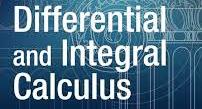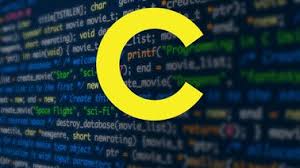1 | Determine the maxima and minima of functions by using partial differential equations |
2 | Use integration to find the volume and surfaces of revolution. |
Course Outcomes
|
CO1 |
Understand the basic concepts of the partial differential equations |
|
CO2 |
Apply Euler’s method for homogenous function |
|
CO3 |
Apply total differentials for functions of several variables |
|
CO4 |
Apply maxima and minima for functions of two variables and Lagrange’s method of multipliers. |
|
CO5 |
Apply numerical measure for the curvature of a curve at a particular point |
|
CO6 |
Apply envelopes for family of curves |
|
CO7 |
Determine the length of the curves in Cartesian and polar form. |
|
CO8 |
Understand the concept of partition and sum applies to the areas of volumes and surfaces of revolution |

- Teacher: NAGENDRA KUMAR GOLLAPUDI
| OBJECTIVE OF THE COURSE: | |||||
| To give a brief introduction to the basic computer as well as the programming fundamentals.The course mainly focuses on C programming language which is used to develop multitude of applications, including advanced scientific systems and operating systems. By learning C, students can become acclimated to the procedural side of the language which gives them fine grained control over anything they may want to build with it. | |||||
| COURSE OUTCOMES: | |||||
| By the end of the course, the student will
be able to: CO 1 : To acquire knowledge about the computer as well as program fundamentals. CO 2: To gather extensive knowledge in C programming, develop program logic which is a fundamental key to be a good developer and develop programming skills. CO 3: Illustrate the flowchart and design an algorithm for a given problem and to develop C programs using operators. CO 4: To master the flow control and to write programs using different control and iterative statements which aids in solving the given problem. CO 5 : Implement different Operations on arrays. CO 6 : To exercise user defined functions to solve the real time problem. CO 7: To strengthen the knowledge on advanced concepts like pointers and to allocate memory using dynamic memory allocation functions. CO 8 : Inscribe C programs that used the concept of Structure, Union, Enumeration,Files etc. |

- Teacher: APARNA VIJAYAN
Course Summary:
This is an introductory course in
statistics designed to provide students with the basic concepts of descriptive
statistics and probability theory. Topics covered include basic descriptive
measures, basic probability theory, random variables, and mathematical
expectation.
Course Learning Objectives(CLO):
At the end of this course, students should be able to
Ø Demonstrate their understanding of descriptive statistics by practical application of quantitative reasoning and data visualization
Ø Use Excel to conduct statistical analysis
Course Outcomes:
After learning the course the students will be
CO 1: Able to apply fundamental concepts in exploratory data analysis and develop skills in presenting data.
CO 2: Independently calculate basic statistical parameters such as mean, median and mode.
CO 3: Understand the probability theory, basic probability axioms and events.
CO 4: Apply probability theory using Bayes’ Rule.
CO 5: Describe the properties of discrete and continuous distribution functions.
CO 6: Calculate the mean and variance of a discrete and continuous random variable.
CO 7: Calculate raw and central moments and covariance using mathematical expectation.
CO 8: Understand the concepts of m.g.f, c.g.f and p.g.f and there applications.

- Teacher: JAIMOLE CROSS